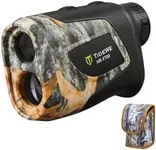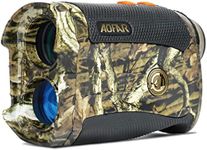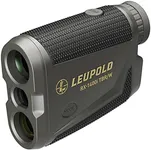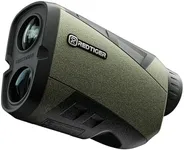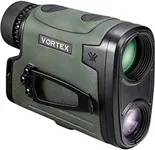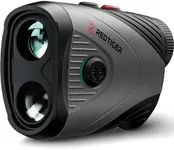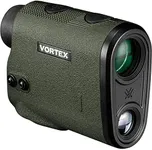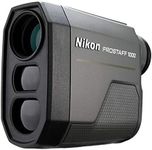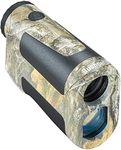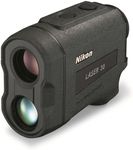Buying Guide for the Best Hunting Rangefinders
Choosing the right hunting rangefinder can make a big difference in your outdoor experience. A rangefinder helps you measure the distance to your target, which is crucial for accuracy and safety. When shopping for a hunting rangefinder, it's important to consider how and where you'll use it, such as the type of terrain, typical distances, and weather conditions. Understanding the key features will help you find a model that matches your needs and ensures reliable performance in the field.Maximum RangeMaximum range refers to the farthest distance at which the rangefinder can accurately measure. This is important because it determines how far you can reliably spot and range your target. Rangefinders typically come in segments like up to 500 yards, 1000 yards, or even 2000 yards and beyond. If you hunt in open areas or need to spot targets at long distances, a higher maximum range is useful. For dense forests or shorter-range hunting, a lower maximum range may be sufficient. Choose a rangefinder with a maximum range that matches the typical distances you expect to encounter.
AccuracyAccuracy tells you how close the rangefinder's measurement is to the actual distance. This is crucial for making precise shots. Accuracy is usually given in plus or minus yards, such as ±1 yard or ±0.5 yards. Higher accuracy (lower number) is better, especially for long-range shooting or bowhunting where small errors can make a big difference. If you need pinpoint precision, look for a model with the highest accuracy rating you can find.
MagnificationMagnification describes how much closer the rangefinder makes objects appear. Common magnification levels are 4x, 6x, or 8x. Higher magnification helps you see distant targets more clearly, which is helpful in open terrain. However, too much magnification can make it harder to keep the target in view, especially if your hands are shaky. If you hunt in thick woods or at shorter distances, lower magnification may be easier to use. Pick a magnification level that matches your hunting environment and your comfort with steady aiming.
Display TypeDisplay type refers to how the rangefinder shows information, such as through an LED or LCD display. Some displays are easier to read in bright sunlight, while others work better in low light. If you often hunt at dawn or dusk, look for a display with good visibility in low light. If you hunt in bright, open areas, make sure the display is readable in sunlight. Consider your typical hunting conditions when choosing a display type.
Angle CompensationAngle compensation is a feature that adjusts the distance reading to account for shooting up or down hills. This is important because the true horizontal distance can be different from the line-of-sight distance, affecting your shot. If you hunt in hilly or mountainous terrain, angle compensation is very helpful. If you mostly hunt on flat ground, this feature may be less important. Think about the terrain where you hunt to decide if you need angle compensation.
Durability and Weather ResistanceDurability and weather resistance refer to how well the rangefinder can handle tough outdoor conditions, such as rain, dust, or drops. Look for features like waterproofing, fog-proofing, and rugged construction if you hunt in challenging environments. If you hunt in mild weather and take good care of your gear, basic durability may be enough. Match the level of toughness to the conditions you expect to face.
Size and WeightSize and weight affect how easy the rangefinder is to carry and use. Smaller, lighter models are easier to pack and handle, especially if you move around a lot. Larger models may offer more features but can be bulkier. If you value portability and quick access, go for a compact and lightweight rangefinder. If you don't mind carrying extra weight for more features, a larger model might suit you.


